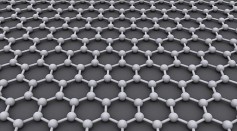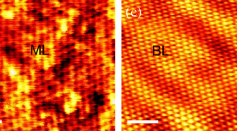Graphene

Electrons Become Fractions of Themselves in Graphene for the First Time, Enabling More Robust Form of Quantum Computing

Breakthrough in Graphene: Novel Semiconductor Signals Leap Towards Faster PCs, Quantum Computers

Magic-Angle Graphene Twistronics: Experts Investigate the Properties of Carbon Allotrope To Create Superlattice Structure

Humans As Batteries: Future Smart Devices Could Use Our Bodies As Power Source

Graphene: The Supermaterial Shaping the Future of Science and Engineering

Nanoporous Sponge Anchored on Graphene Produces Faster, More Efficient Wastewater Treatment
Bioinspired Proteins Used in Developing New 2D-Layered Materials for Wearable Devices, Among Others
Imaging Technique Accelerated to Capture Structures of Tiny Molecules, Enhancement of Daily Life Applications from Plastics to Pharmaceuticals
Microbial Nanomotion Measured How Bacteria Stop Producing Sounds When Killed by Antibiotic

Indium in Mobile Phone, Television Screens: New Study Reveals How Graphene Could Replace Unique Metal Used in Electronic Devices
HPC Could Help Scale Up Graphene Production

Optical Forging Turned Flimsy Graphene to Ultrastiff
Graphene System Freezes Electrons With Rising Temperature
Magic-Angle Twisted Graphene Could Play Host to New Phases of Matter
Most Popular

How Technology Is Changing the Real Estate Industry?

Study Reveals High Turnover in Scientific Research Careers: What This Means for Future Scientists

Nikolay Karpenko Biography, Photo, Career, Accomplishments

China’s Tiangong Space Station to Expand Its Capabilities With New Modules






